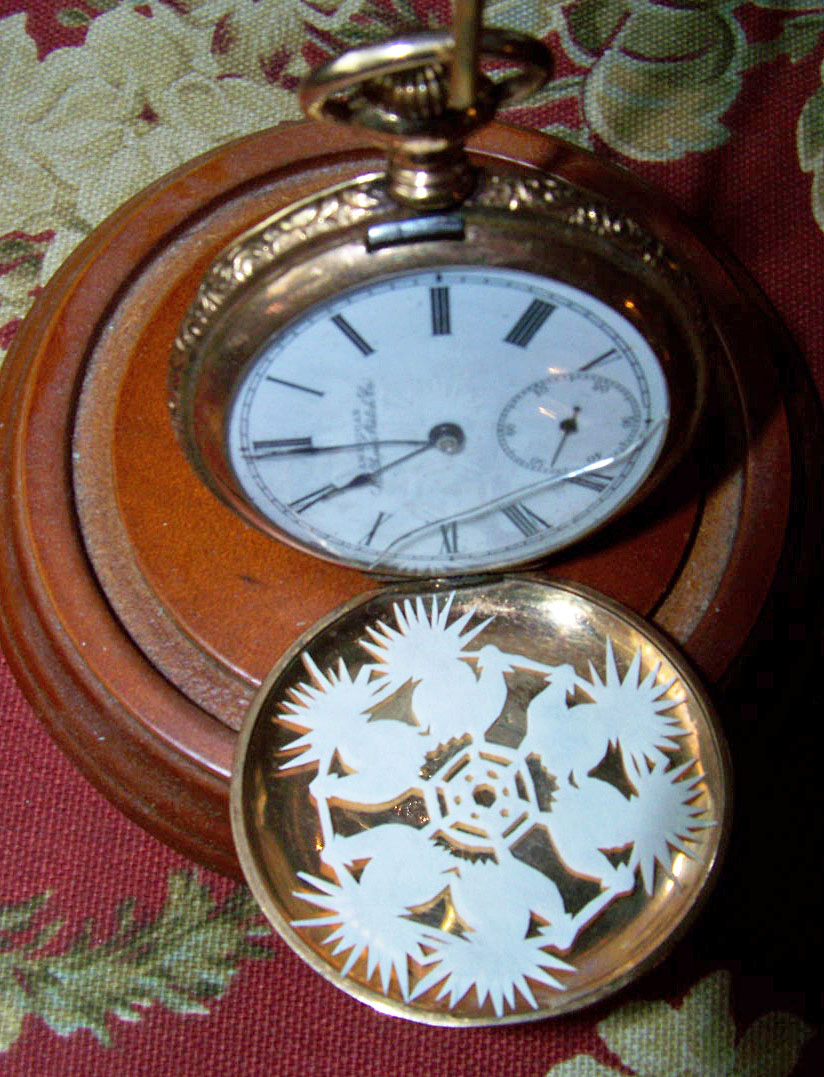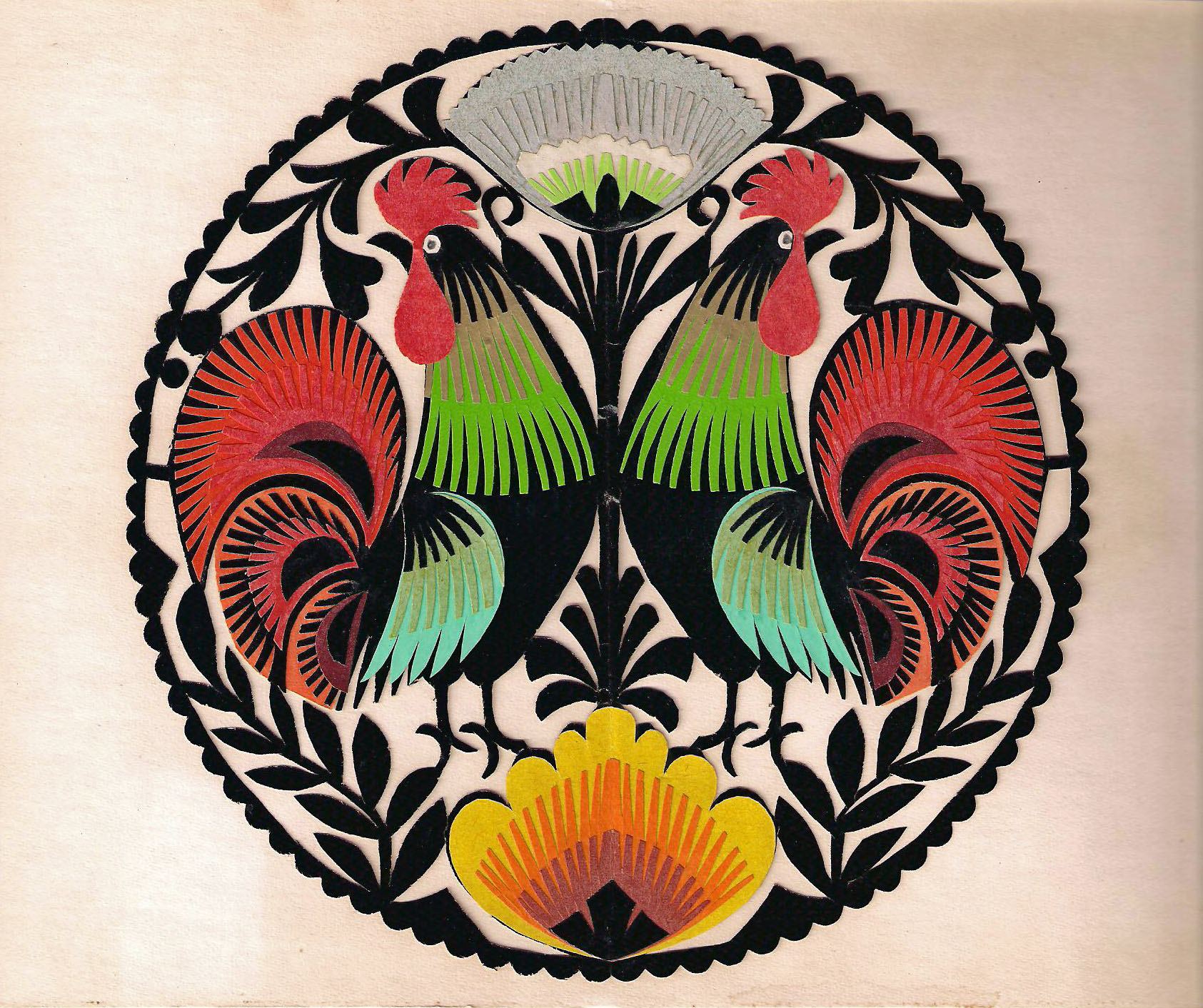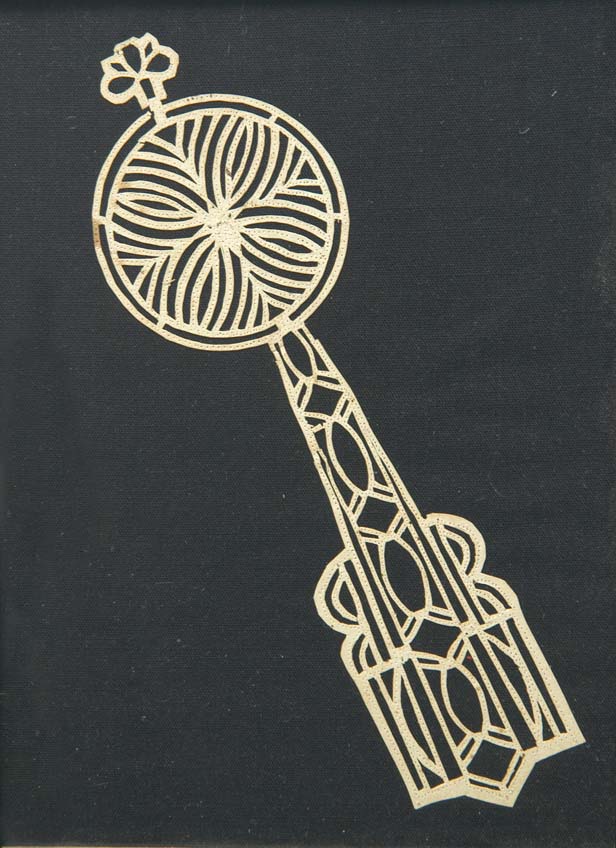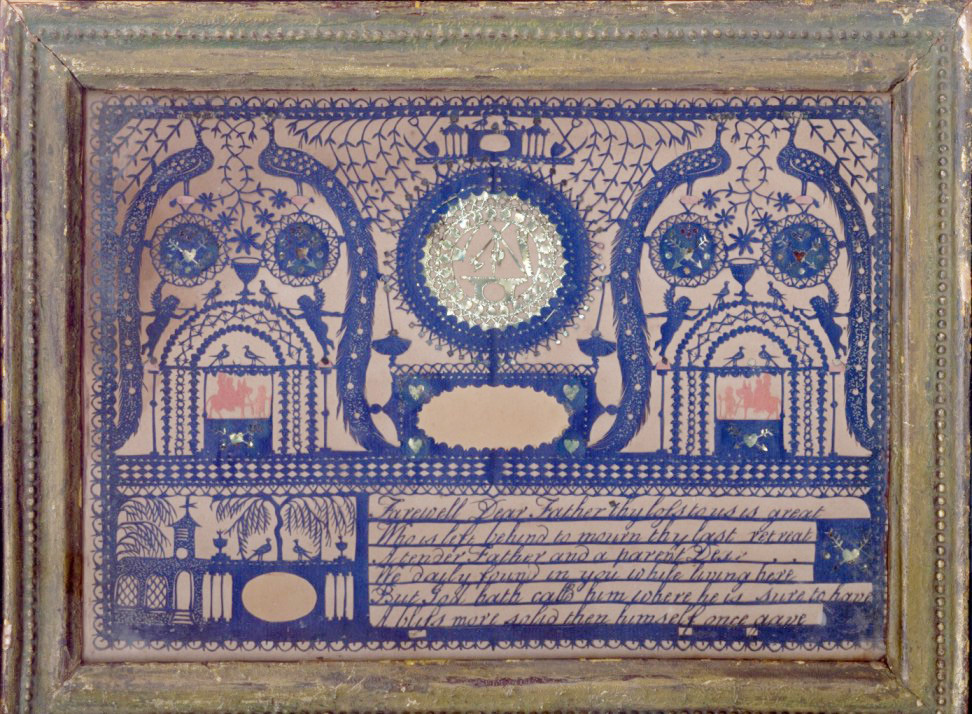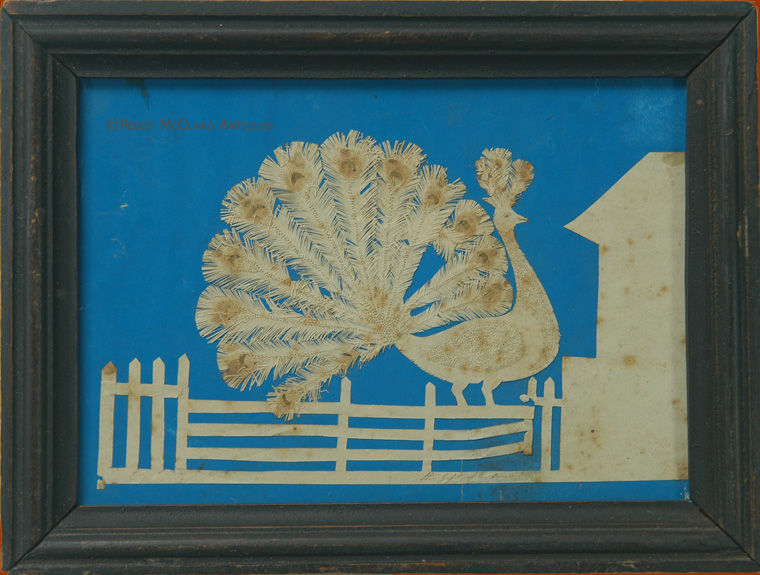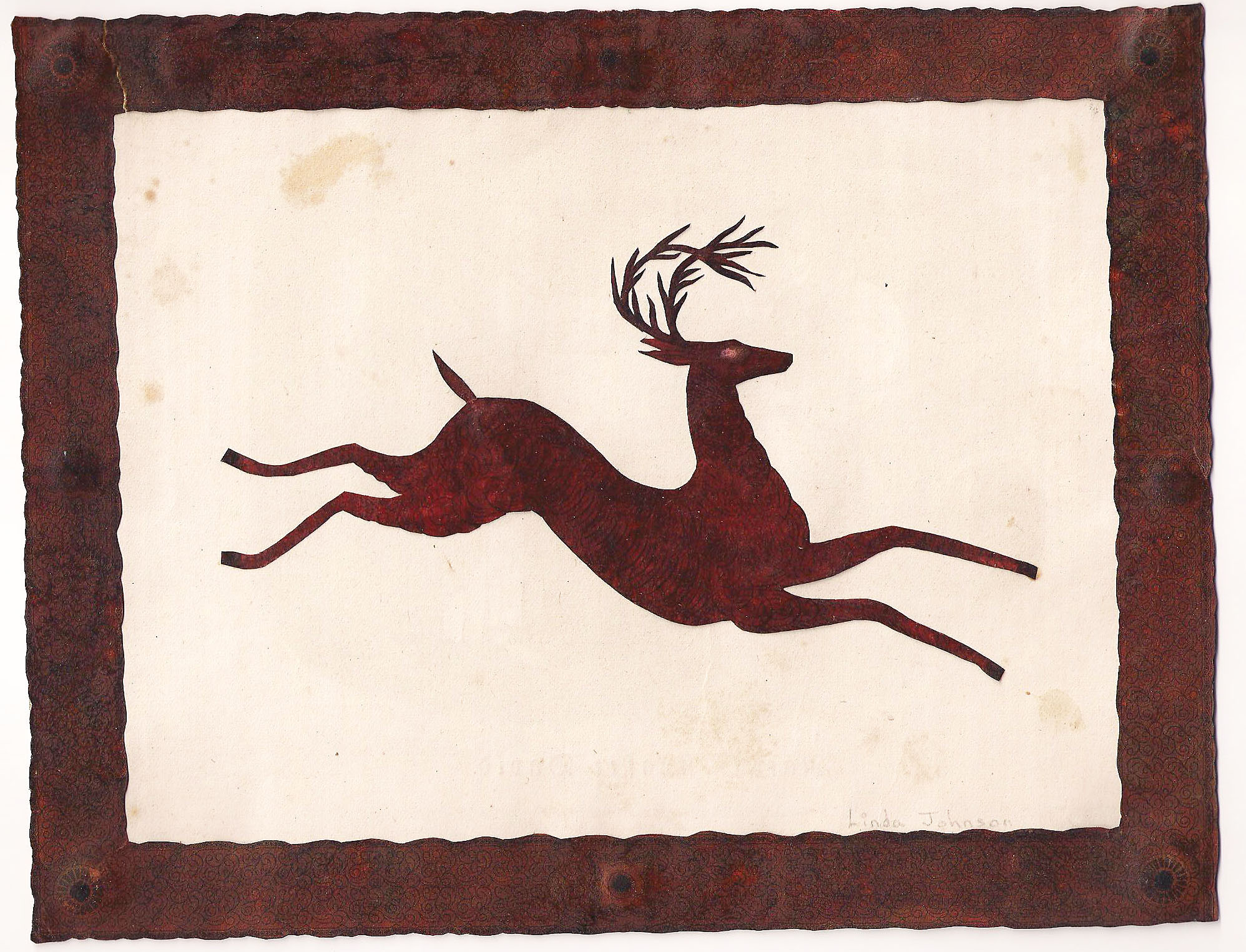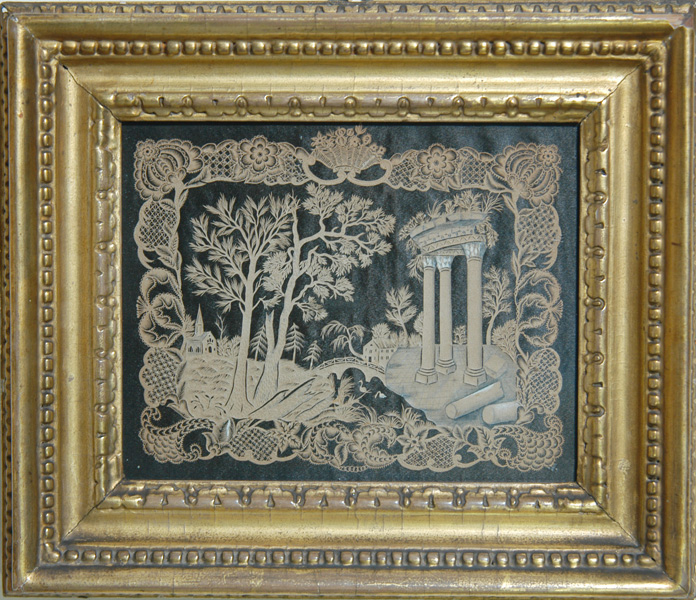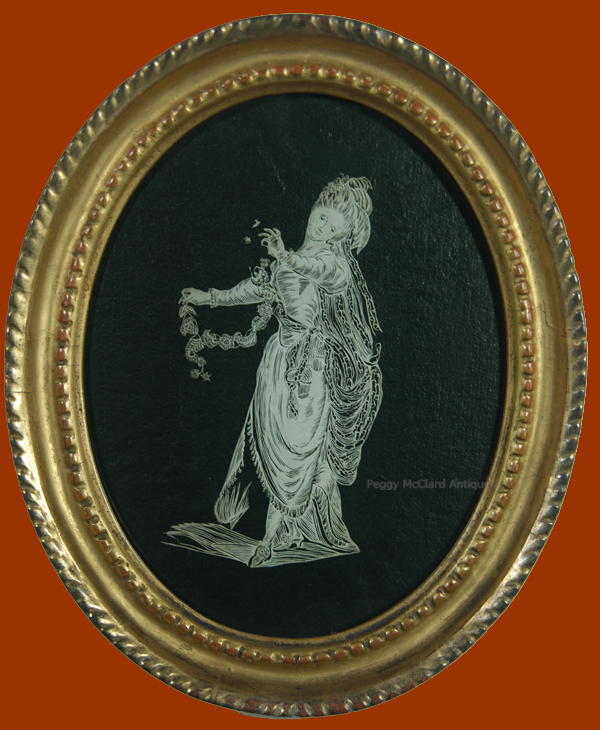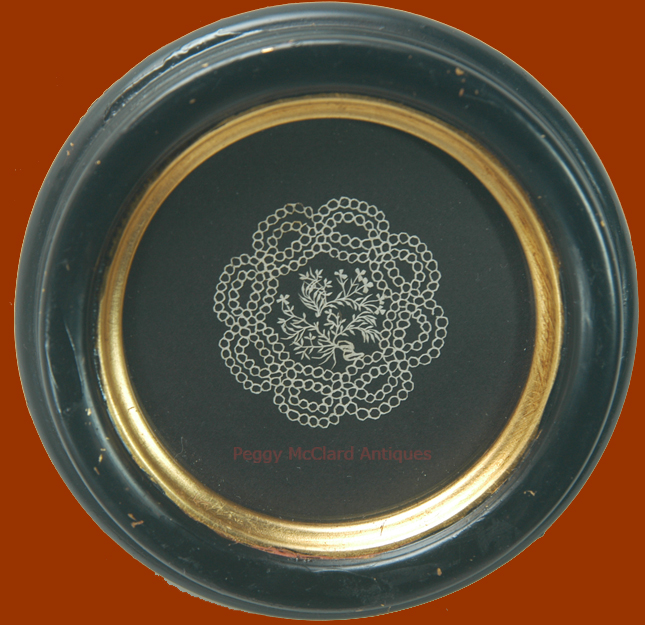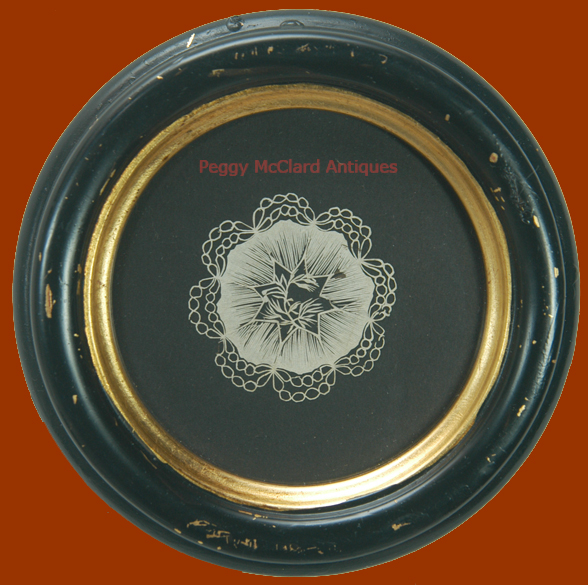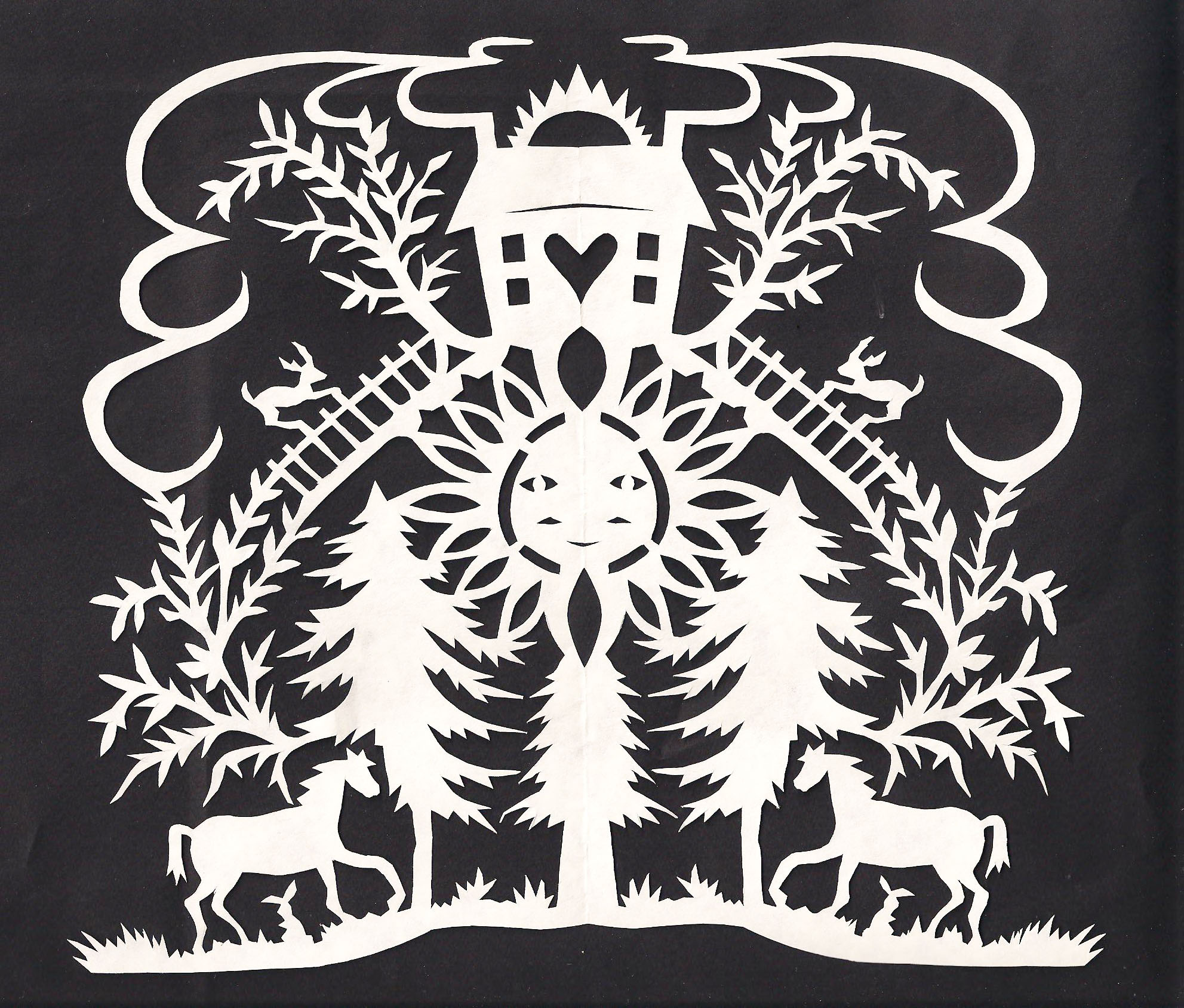Just for Fun
Scherenschnitte, The Art of Papercutting
Guest Article written and copyright © Susan S. Hahn
Click Here for Ms. Hahn's biography & contact information
Unless otherwise noted, all images are copyrighted by the guest author
-
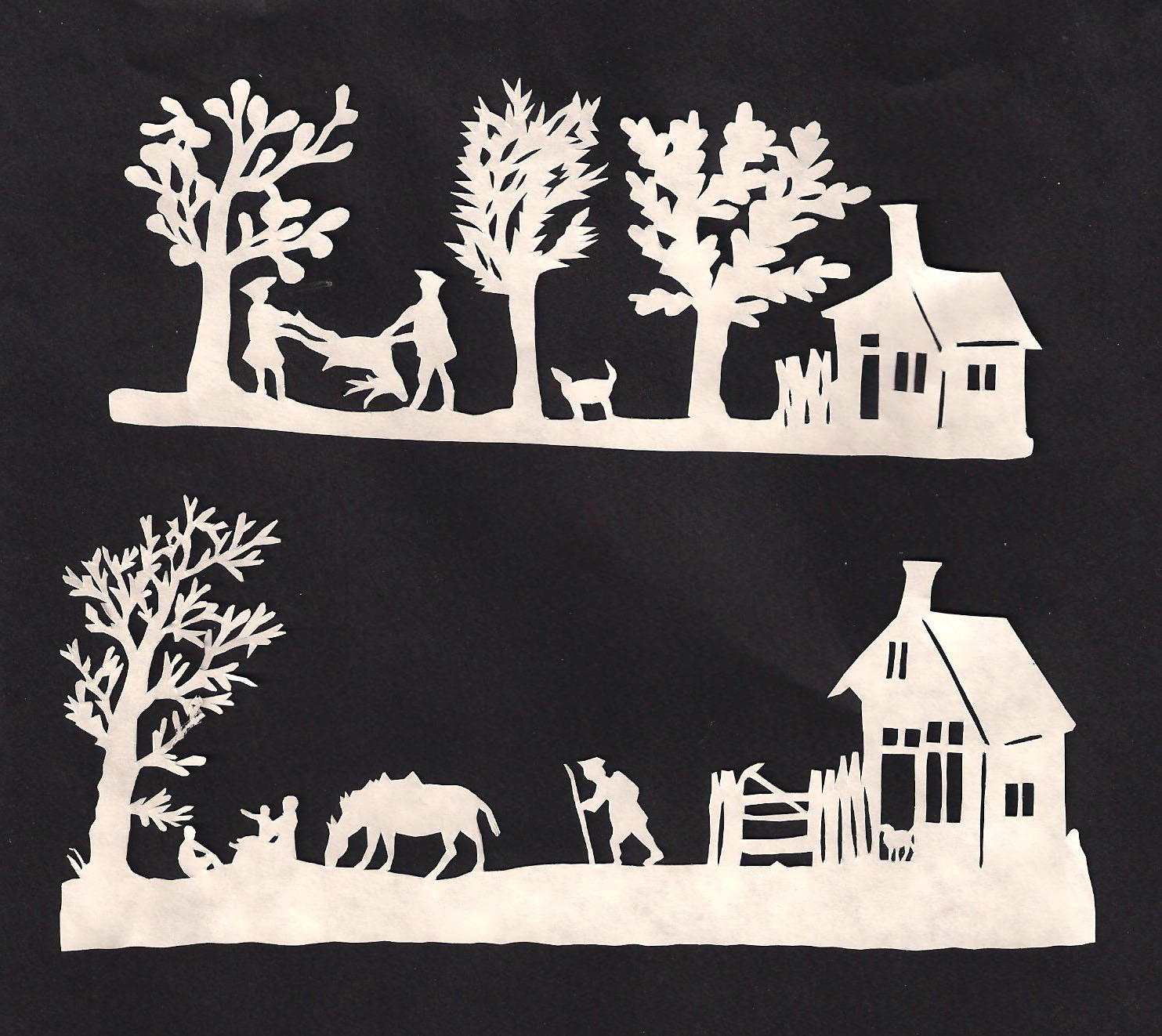 Cutting by Susan Hahn based on antique designs
Cutting by Susan Hahn based on antique designs
-
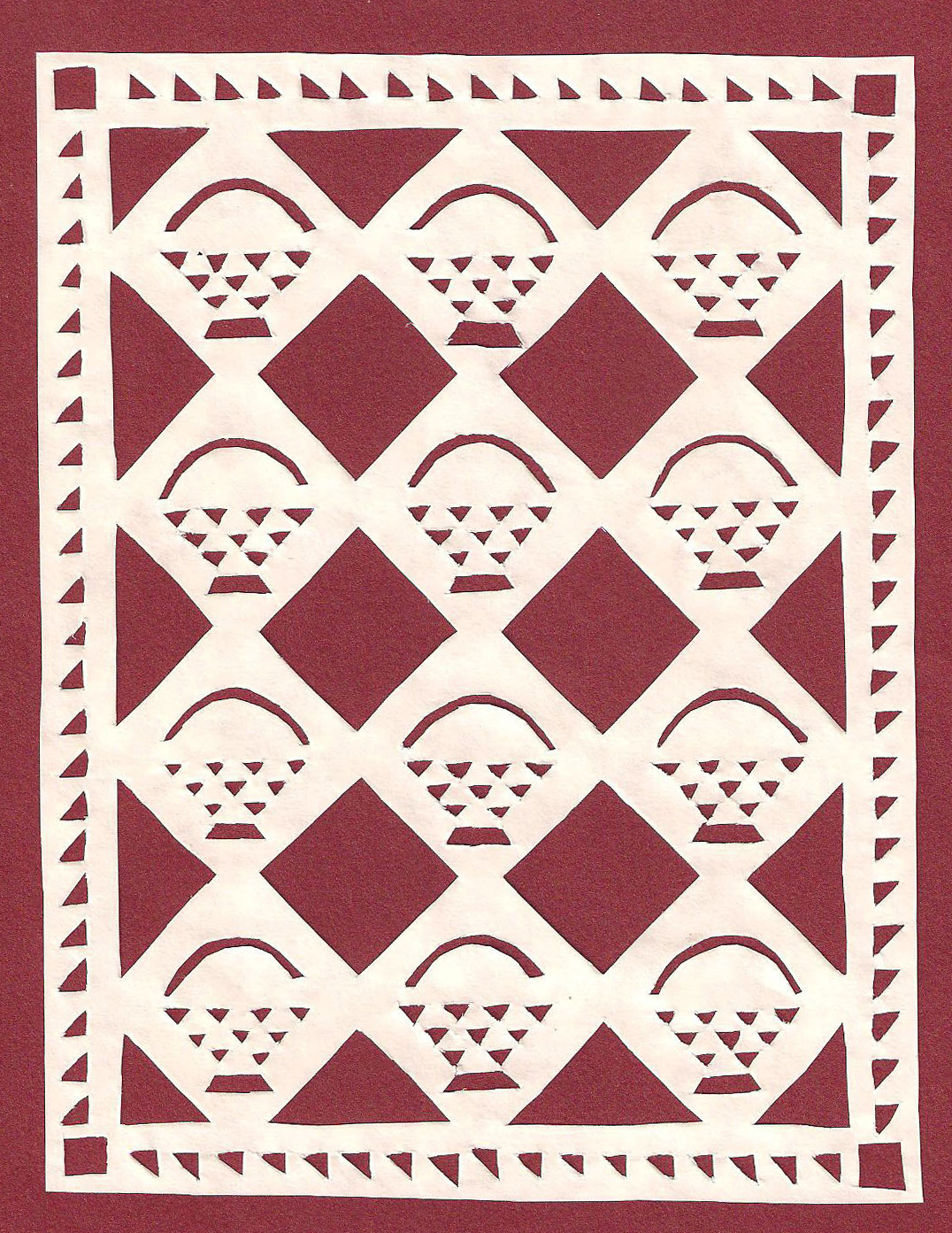 Cutting by Susan Hahn based on quilt design
Cutting by Susan Hahn based on quilt design
Scherenschnitte, the ancient art of papercutting, is German for 'scissors snips.' It began in China with the invention of paper, around 100 A.D by Cai Lun in the Eastern Han Dynasty. Chinese papercuttings (called Jianzhi) were very popular during the Sung Dynasty (10th-13th centuries). Cuttings were placed in windows and on doors as protective images from evil and were also called chuang hua (meaning Window Flower). Early paperuttings in China were made by wealthy nobles as a form of entertainment. The oldest surviving papercut, a cut circle design, was found in Xinjiang, China and dates from the 6th century. Paper-making was taken by Chinese war prisoners into the Arabic region of the world about 750 A.D. and from there spread to Europe. Papercutting came from China to Austria by way of Indonesia, Persia, and the Balkan Peninsula. By the 14th century, it had spread to the rest of the world.
-
 Chinese Cutting
Chinese Cutting
-
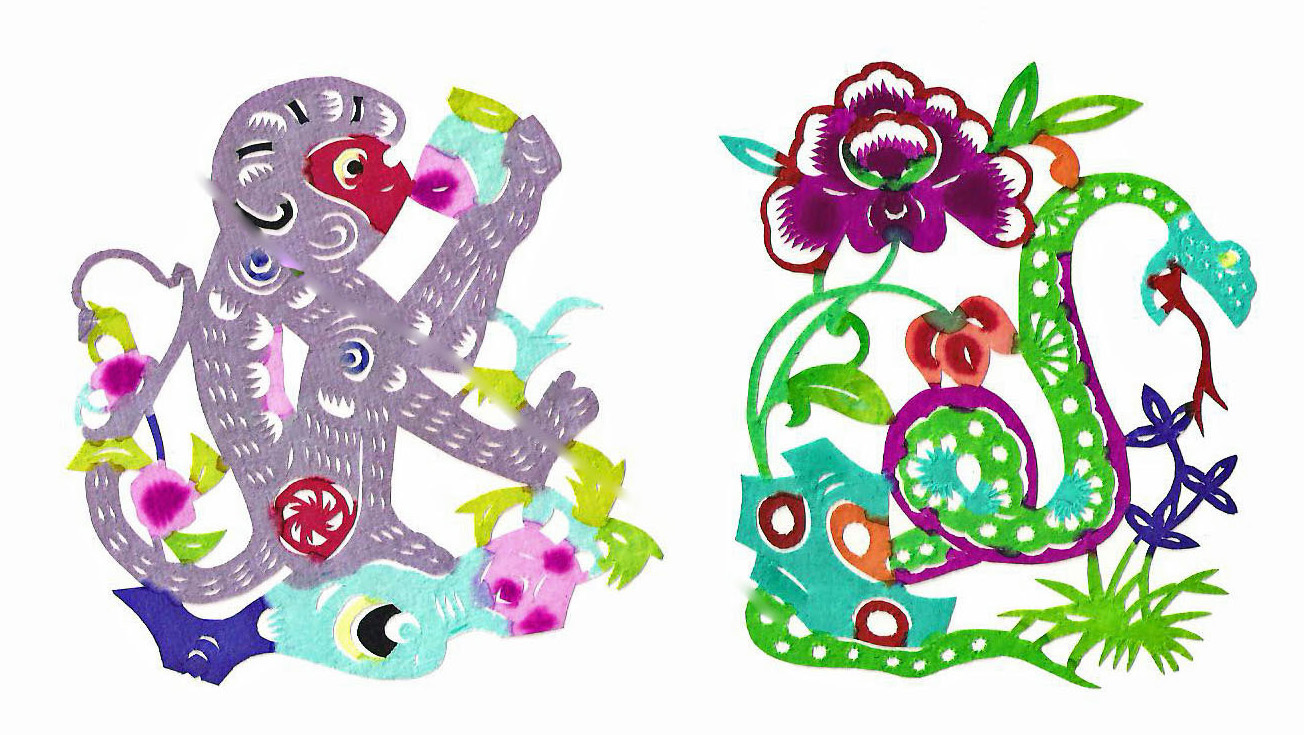 Vintage Chinese Cutting
Vintage Chinese Cutting
After being 'exported' to Europe, it became a very popular tradition, particularly in Germany, Denmark, Holland, Switzerland and other countries. These early types of cuttings were usually 'palm-sized' and consisted of tiny landscapes. Many of these antique cuttings have been found inside old pocket watches. They were usually collected by the wealthy.
Hans Christian Andersen, not only regaled children with his delightful stories, but was also a very unique papercutter himself, snipping away at designs while telling his charming tales to his audience. At the end of his story, he would open out his finished cuttings to the amazement of everyone listening. Many of his acquaintances and friends were given these cuttings as gifts and were highly treasured. A museum featuring many of his famous papercuttings is open to the public in Odense, Denmark. Check out the Hans Christian Andersen Museum's wonderful website at http://museum.odense.dk/museums/hans-christian-museum.aspx
The art of papercutting has become part of many different cultures including Jewish, Polish, and Mexican. The Jewish tradition of papercutting has been used among its people to enhance ketubahs (marriage contracts), special Jewish occasions and feasts (such as Shabbat Mitzvah, and Passover, etc.) and are treasured and hung as artwork in Jewish homes. These types of papercuts often use symmetrical designs featuring traditional Jewish words and symbols.
-
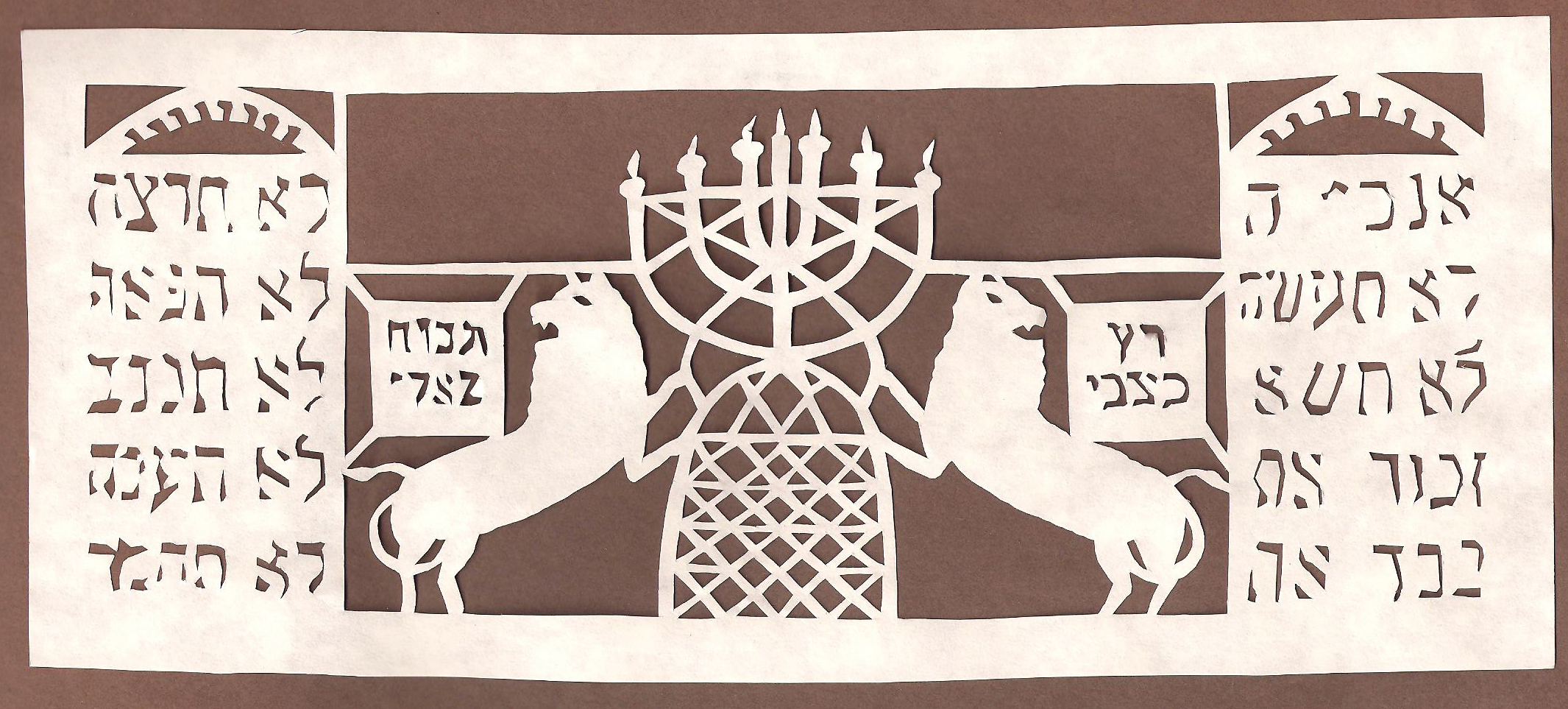 Jewish Style Cutting, Adapted & Cut by Susan Hahn
Jewish Style Cutting, Adapted & Cut by Susan Hahn
Polish papercutting has its own unique style, called Wycinanki (vee-cee-non-key). Their particular version of papercutting traditions was first practiced by shepherds in Poland who cut out images from tree bark and in later years transitioned it to paper. This form dates from the early to mid 19th century and was used for home decorations and window coverings. Each region in Poland established its own signature style of cutting and are usually made with many layers of very colorful papers, fit together to form a complete design often using roosters, birds, and multi-folded medallion style designs. Other parts of the country use only one color in their designs. Today they still have festivals in various parts of Poland honoring these various papercutting styles.
Mexican papercutting is called Papel-Picado, or 'perforated paper' and originated in ancient Mexico. Aztecs used mulberry and fig tree barks to make a rough form of paper, called 'Amatl.' In Mexico, during the mid 1800's, people were forced to buy from 'hacienda stores' and it was here they discovered paper from China. In more recent years, tissue paper has become the paper of choice for Papel-Picado. Artisans layer 40 to 50 sheets of various colors of tissue paper at a time and punch out their designs using fierritos, or chisels. When completed, they are hung on string to make long banners used for weddings, religious festivals, and other special events. Featured designs include birds, flowers, and animals. Skeleton designs are also used to honor the 'Day of the Dead' celebrations in Mexico.
-
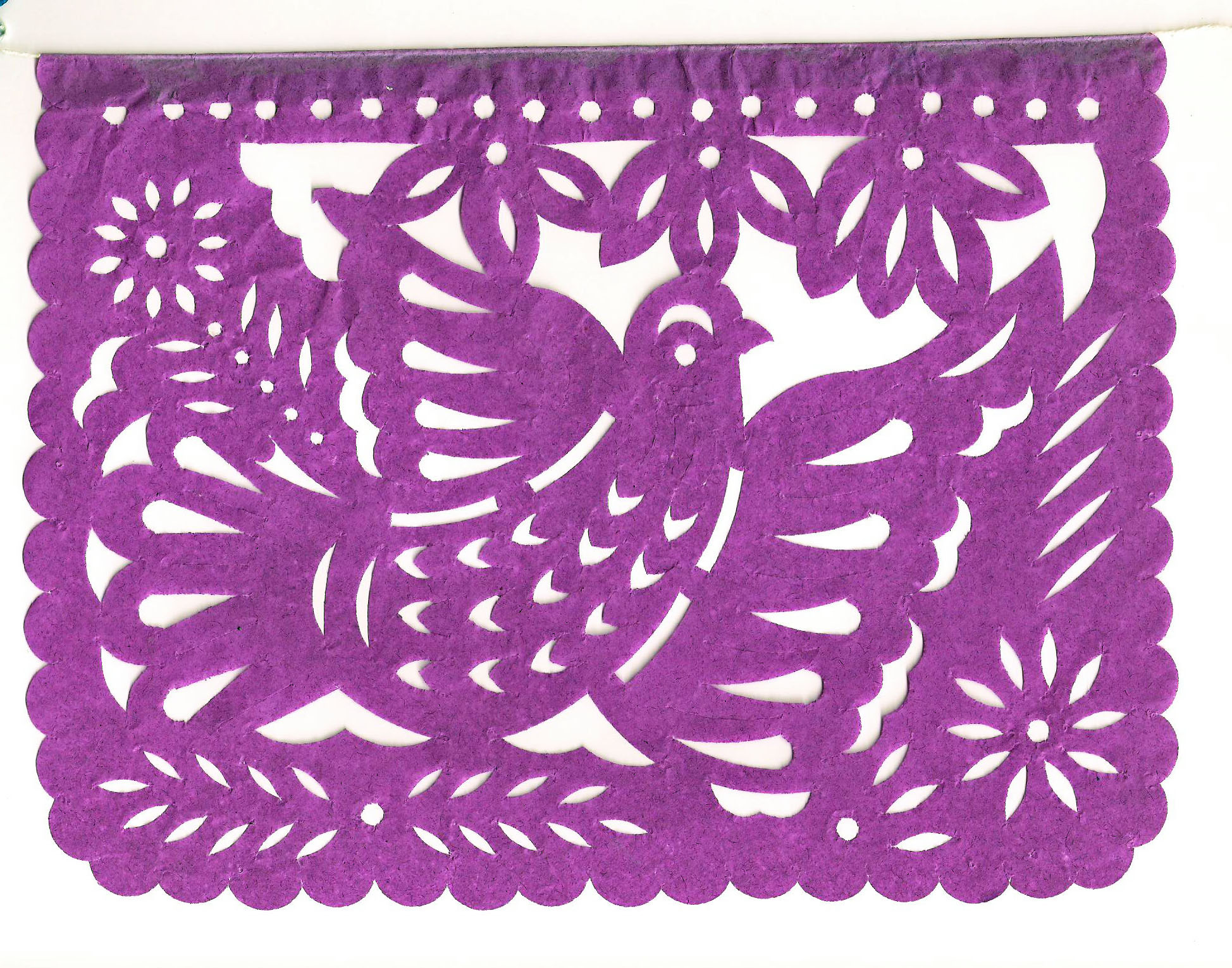 Papel-Picado (Mexican Cutting)
Papel-Picado (Mexican Cutting)
The art of papercutting in the United States began with German immigrants to Pennsylvania, as well as others who brought the craft with them from Europe. Valentine tokens were cut and embellished, as well as wedding certificates, and birth commemoratives including fraktur. Before the invention of photography, silhouettes or 'shadow cuttings' were also quite popular as a parlor game, and also from traveling artists who cut the side views of many famous (and not-so-famous) 'heads' of that time up and down the Eastern Seaboard.
-
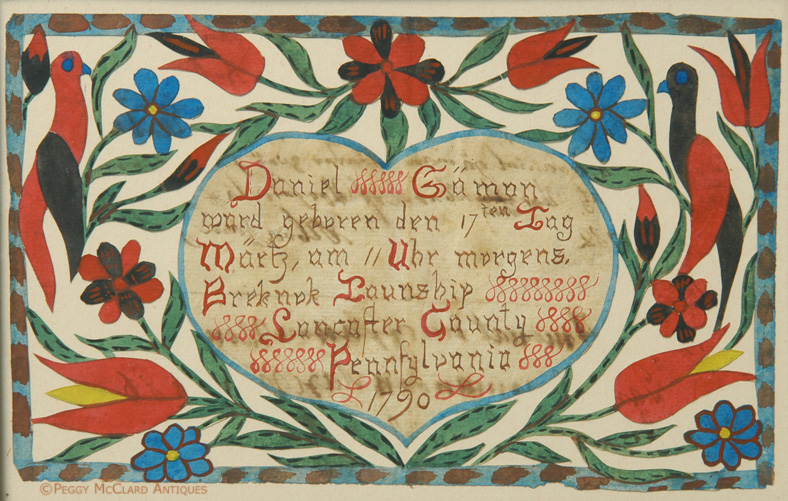 Circa 1790 Scherenschnitte Fraktur
Circa 1790 Scherenschnitte Fraktur
Although there has never been a large number of artists involved with this medium in the past, the art has recently enjoyed a renaissance of sorts with a growing number of artists and collectors discovering its unique characteristics and visual appeal. Antique and vintage cuttings have always been quite collectible but are becoming more difficult to find.
Modern scherenschnitte is still a growing art form, influenced by innovative techniques and inspiration, including cutting instruments (sheep shears, scalpels, surgical scissors, etc), papers (hand-made, naturally dyed, rice paper, etc) and design (original sketches, free-form, traditional). An artists' guild for this medium exists, The Guild of American Papercutters (GAP - www.papercutters.org), with 325 members, and is representative of all forms of the old styles of cutting, as well as new and creative ones.
-
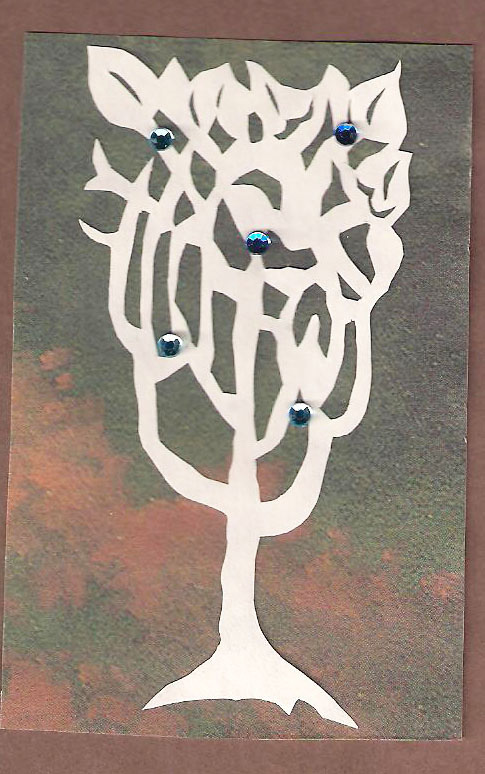 Cutting by Susan Hahn
Cutting by Susan Hahn
-
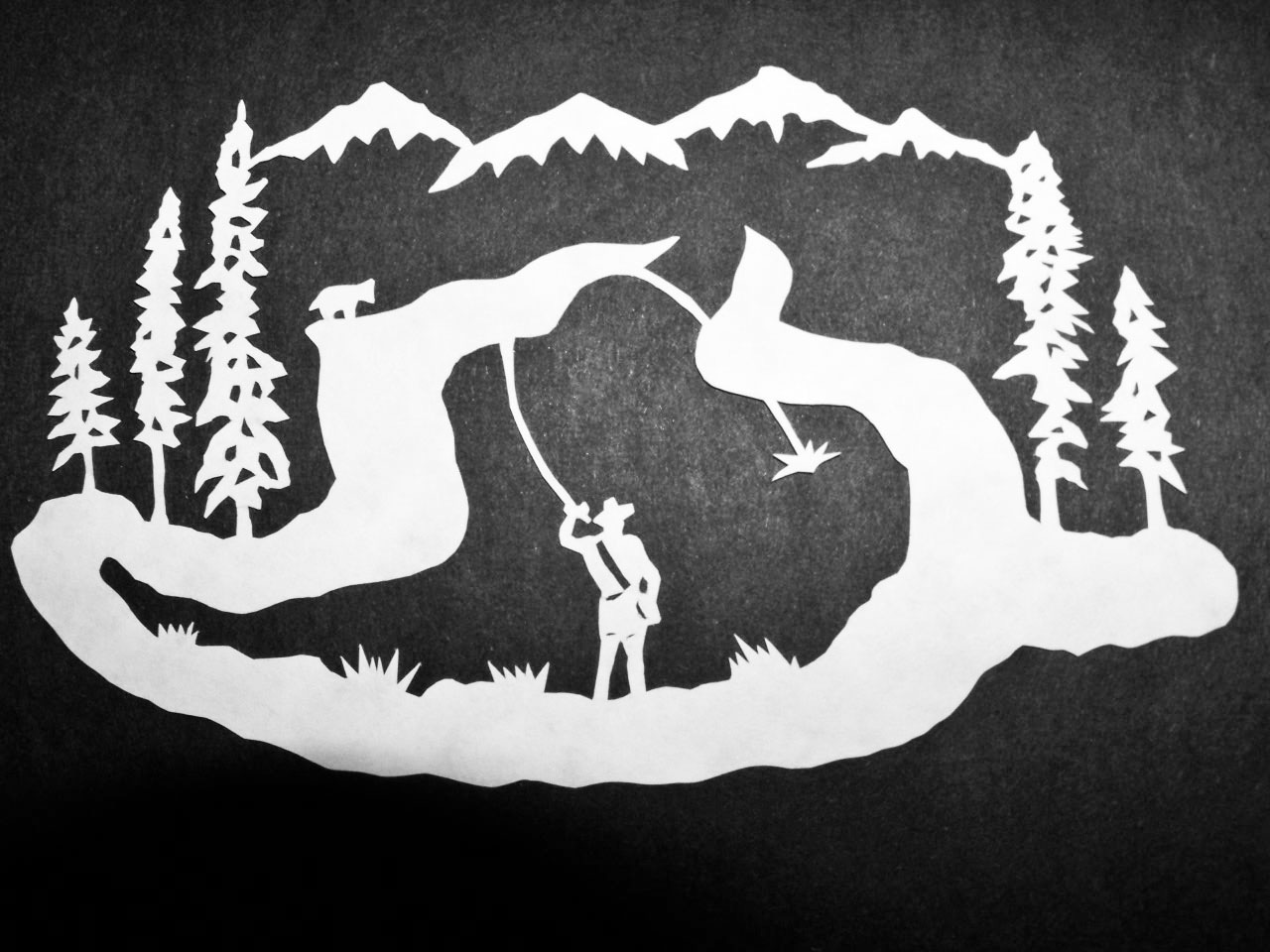 Cutting by Susan Hahn
Cutting by Susan Hahn
Please see the antique Scherenschnitte currently in inventory on the Folk Art page.

